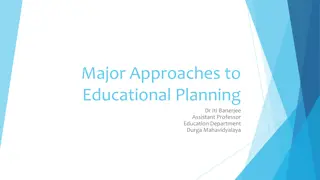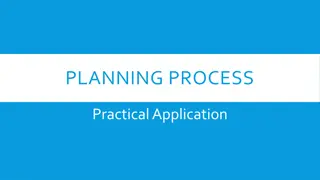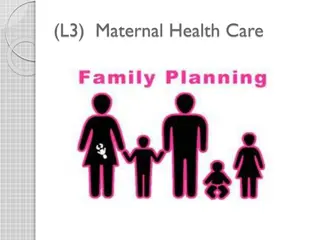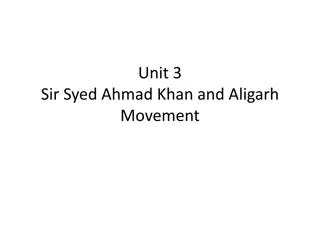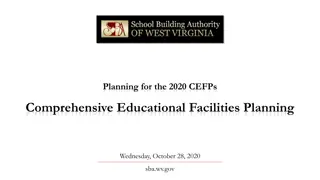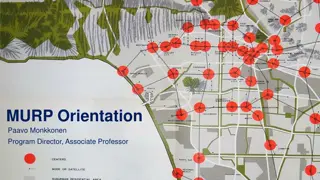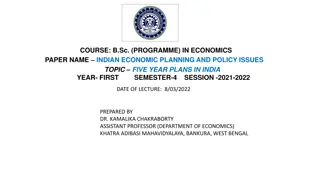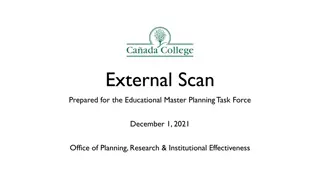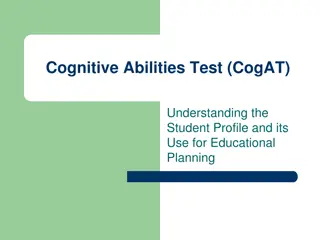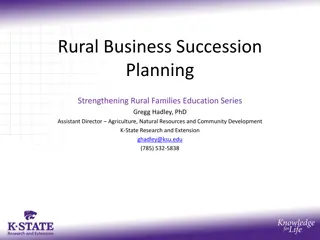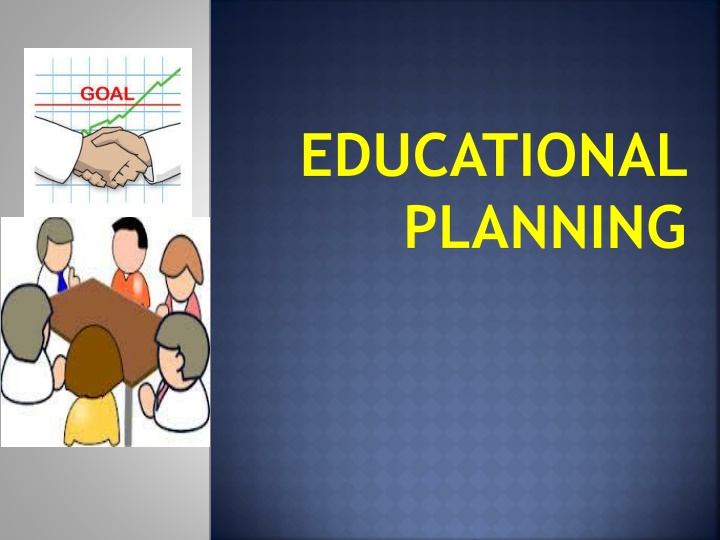
Educational Planning Process and Characteristics Explained
Learn about the importance and process of educational planning, including the identification of objectives and strategies, cooperation, remedial measures, team work, and more. Educational planning involves setting out a pattern of action to bring about overall changes as viewed by national policies, bridging the gap between current state and desired future state in education.
Uploaded on | 2 Views
Download Presentation

Please find below an Image/Link to download the presentation.
The content on the website is provided AS IS for your information and personal use only. It may not be sold, licensed, or shared on other websites without obtaining consent from the author. If you encounter any issues during the download, it is possible that the publisher has removed the file from their server.
You are allowed to download the files provided on this website for personal or commercial use, subject to the condition that they are used lawfully. All files are the property of their respective owners.
The content on the website is provided AS IS for your information and personal use only. It may not be sold, licensed, or shared on other websites without obtaining consent from the author.
E N D
Presentation Transcript
EDUCATIONAL PLANNING
INTRODUCTION As we all know, our formal education is an organized one. We must have trained teachers to teach. Buildings and many facilities have to be put up in order to institutions function effectively. Our educational system must be arranged at every stage in such a way that it meets the needs of both the individual and the nation. This process of intelligently trying to organize education so as to respond to the needs of its recipients is what can be termed educational planning. have educational
MEANING OF EDUCATIONAL PLANNING The process of setting out in advance a pattern of action to bring about overall changes as viewed by national policies by the closest possible articulation of means and ends. It is a basic management task. It is a means of achieving effectiveness. Its uniqueness lies in its future-orientation or anticipation made. Today, educational planning is an absolute requirement. The complexities of modern technology in society have given rise to the need for planning in education. Planning bridges the gap between where we are and where we want to be. higher levels of
CHARACTERISTICS OF EDUCATIONAL PLANNING: The following are the main characteristics of educational planning: Cooperation Remedial Measure Choice of Best Alternative Team Work Social and Economic Goals Scientific Changes Anticipation
EDUCATIONAL PLANNING PROCESS The educational planning process contains the following steps: Statement of educational objectives- The educational objectives must be identified and clearly stated. This will ensure that there is no confusion about the objectives. Identification of various activities- Which are needed to achieve the stated educational objectives . Evaluation of results- Evaluation should be related to the stated objectives.
USES OF EDUCATIONAL PLANNING Considering concerned distributing the limited resources and the types of education (formal, non-formal etc), the process of educational comprises three main functions: Identification of Objectives and Strategies Proper Distribution of Limited Resources Educational Planning aids decision making that with educational the problem planning of is wisely planning
IDENTIFICATION OF OBJECTIVES AND STRATEGIES By this we mean that educational planning helps in identifying and defining the objectives and the strategies, programmes, procedures, policies and standards which education needs to be more effective and efficient. Through educational planning we are able to clearly identify and define educational objectives, identify and also clearly define various activities which are to be carried out to achieve the educational objectives
PROPER DISTRIBUTION OF LIMITED RESOURCES By limited resources, we mean the resources which are available to satisfy our needs. Educational planning helps in seeing to it that the limited resources are properly or wisely allocated to provide the needed level and type of education to the citizens of the country. In order to help in wisely allocating the limited resources, alternative courses of action are compared and then the one that has great benefits for the citizens are allocated.
EDUCATIONAL PLANNING AIDS DECISION MAKING Educational Planning helps decision maker at all levels to reach a better and well informed decision. This is because through educational planning, adequate data are collected on the particular level that we wish to plan for and on the basis of such information available. therefore helps to promote speedy and effective administration of the system since the administrators of the system are provided with necessary guidelines to work with. Furthermore, with educational planning, it becomes easy to evaluate the progress made in the educational system. Educational planning
FUNDAMENTALS OF EDUCATIONAL PLANNING AND APPROACHES Fundamentals of educational planning entails the following: The objectives of educational planning The importance of educational planning Components of Educational planning Educational planning process and approaches to Educational Planning
THE OBJECTIVE OF EDUCATIONAL PLANNING There are various dimensions to the general objectives of educational planning: Political dimensions Economic Dimensions Science and Technology Dimension Legal Dimensions Demographic Dimensions Cultural Dimensions Sociological Dimensions
Political dimensions: The political objective of the educational planning should relate to the promotion of justice, peace, law governance. order and good Economic Dimensions: The economic consideration in educational planning should lay emphasis on the need for individual to live happily. Educational plan should include labour and employment aspects Educational plan should tend towards preparing people for gainful employment, development of gifts of nature and production of goods to satisfy human wants .
Science and Technology Dimension Education for technological advancement should be well planned, financed and implemented for the development of individuals in the technological society. Legal Dimensions Educational planning requires specific legal framework. The legislative, courts and the judiciary have important roles to play in education of a nation. There is need for legislative support for educational planning. The implementation of educational planning should be within the ambits of the nation s constitution, status and education law.
Demographic Dimensions Educational planning should take special notice of the structure and characteristics of the school going population and the population around the schools. Educational planning without sufficient demographic data results to failure at achieving the educational objectives. Cultural Dimensions Linguistic and cultural operations of educational planning generally and also the implementation of polices on education. The national development objectives should be culture oriented because of the social value system as it affects education. Sociological Dimensions Educational planning should be able to consider the close relationship between the structure of the society and schooling. groups influence the
THE NEED FOR EDUCATIONAL PLANNING The need for educational planning entails the following: The complex nature of education Resources to be used in education sector are limited Adequate plans help to direct and co-ordinate the actions of employees in order to achieve maximum effectiveness, efficiency and productivity Planning is necessary for administrative decisions in education Planning enables a nation to make its choices clear in terms of the aim and objectives Educational plans are designed to avoid in balances and enormous wastes and replenish the steadily aggravated shortage of teachers
COMPONENTS OF EDUCATIONAL PLANNING The major considerations for educational planning in a country include: Educational status and the Head count. Supply and Demand of Teachers Educational Financing School Buildings Curriculum Development Educational Materials Expansion Models Relevance to Political, Economic, Social and Cultural Policies and Objectives. Legal Bases
EDUCATIONAL STATUS AND THE HEAD COUNT Every realistic plan is based on a dependable census when figure from the head count were dependable, estimate, with reasonable accuracy, the number of classroom, teachers and headmasters, desks and tables elaborative, capital and recurrent costs e.t.c we could
SUPPLY AND DEMAND OF TEACHERS The quality of education depends solely on the quality of teachers trained. This is because they can only teach what they know. There is need for the restructuring of the curriculum of colleges of Education and faculties of Education to respond to national needs. Also, steps should be taken to improve the conditions of service of teachers if they are to remain in the education sector .
SCHOOL BUILDINGS School buildings should be adequately because of their depreciation value; which if not properly looked after, could be hazardous to the existence of the users, that is teachers and students. maintained
CURRICULUM DEVELOPMENT The constant modification of the curriculum is necessary, since the curriculum should be relevant to the needs of the society, and the society is not static, it is dynamic.
EDUCATIONAL MATERIALS Educational materials such as books, study materials, teaching aids etc. may make the educational programme fail, if not properly organized.
EXPANSION MODELS Expansion models must be created from the beginning to bring into consideration what is envisaged in the primary, secondary and senior secondary schools many years ahead, and to look for possible strengths and weaknesses they can borrow and avoid in the present one.
RELEVANCE TO POLITICAL, ECONOMIC, SOCIAL AND CULTURAL POLICIES AND OBJECTIVES. If educational plans are not closely geared towards political, economical, social and cultural objectives, they will not take off and people will be educationally dissatisfied.
LEGAL BASES Planning takes place under established laws. The legal framework for planning should be streamlined through legislation to include the form, structure and functions of the planning units and agencies, the staffing and the responsibilities, the relationships of the units with other educational authorities
THE EDUCATIONAL PLANNING PROCESS Educational Planning Process involves the following steps: Plan survey and deliberations. The very first task to be accomplished is a survey of the existing conditions, potentials and constraints. Necessary information must be organized and analysed to reveal the existing state of educational development and areas of needs. Then the next stage follows. data and
Definition of goals and objectives To objectives to be pursued as well as specify the targets to be achieved. Educational objectives broadly stated by leadership must be made more specific by the technical planners to permit specific task definitions . define the new educational that are the political
Programme Planning and design. The technical planner has to reduce the already defined educational objectives to specific task to be alternative programmes that can be adopted must be designed. The alternative programme and or techniques for accomplishing such educational tasks must be quantitatively evaluated for efficacy to permit a rationale choice among them. accomplished an
Programme Provision. This requires the provision of adequate resources (human and materials) to ensure effective programme implementation. Implementation and Control. Translate the plan into action by arranging for the execution. Determine how the activities that should be done, the manpower requirements and so on. Arrange the execution of the plans, a sort of time table will be necessary to ensure that all actions taken are intend to achieve the stated objectives. This stage also requires the commitment of the political leadership to ensure efficient flow of resources and to guarantee smooth implementation and supervision of the plan.
Plan evaluation and plan regeneration. Evaluation must be related to stated objectives. The extent to which a plan meets the goals it has established for itself can be determined only when those goals are again brought to picture. A plan that does not produce the results it has anticipated has evidently failed. Plan regeneration constitutes the last lap in educational planning cycle. This requires linking subsequent plans with the previous plan in terms of feedbacks or learning experiences. Plan regeneration or recycling is most desirable so that unachieved objectives or programmes from previous plans can be accommodated in subsequent ones.
EDUCATIONAL PLANNING APPROACHES The following are approaches used in Educational Planning: Social Demand approach Manpower Requirement or forecasting approach Cost- Benefit/Rate Returns approach Synthetic (Eclectic) Approach.
SOCIAL DEMAND APPROACH The education as a birthright and so, plans that it be made available to all those who demand for it. One of the assumptions of the approach is that the demand for education will continue to be greater than its supply. social demand approach regards
MANPOWER REQUIREMENTS APPROACH The recognizes only areas of shortage of manpower in the economy and plans to train and provide such required skilled manpower. It believers feel that in order to achieve increased productivity manpower must be provided. Manpower Requirements Approach more skilled
COST BENEFIT ANALYSIS/RATE OF RETURNS APPROACH The Cost-Benefit Analysis holds that for an individual or government to be able to make a wise decision concerning investment, it must calculate the cost of such a project, the benefits to be derived from it and the alternative for investing in that particular project
THE SYNTHETIC (ECLECTIC) APPROACH This approach is a synthesis of the various approaches. It draws on the benefits of the other three approaches. This approach affords educational planners the benefits of each of the approaches earlier mentioned
CONCLUSION Educational planning can be defined as the process of setting out in advance, strategies, policies, procedures, programmes and standards through which an educational objective (or set of objectives) can be achieved. Educational planning is a detailed and systematic process, it just does not happen by chance. It sets out in advance. It is a forecast of what duties, assignments and tasks are to take pace in the future. It is goal-oriented: it is directed at achieving a set educational objective.




